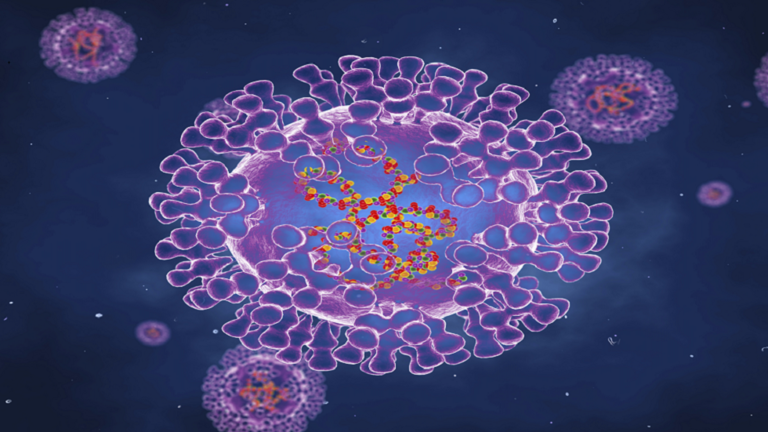The number of cases of chickenpox appears to be rising, with dozens of other infections appearing every day. However, researchers have yet to determine how the virus is transmitted.
According to the Centers for Disease Control and Prevention (CDC), the condition can affect the eyes and mucous membranes of the mouth.
The latest outbreak of the virus is by far the largest outbreak outside West Africa to date, raising concerns that it could evolve into a settlement dimension.
- The majority of cases show rashes on the soles of the hands and feet
- according to the CDC. In some cases
- rashes may spread to the mucous membranes inside the eyes and mouth.
The transmission of ape pox virus to humans is believed to occur primarily through large respiratory droplets.
Since droplets cannot travel more than a few feet, long face-to-face contact is required for transmission.
The CDC explains
- "Skin rashes usually begin within one to three days of the onset of fever.
- Rashes tend to focus on the face and limbs and not on the torso.
- It affects the face in 95% of cases, and the hands and soles of the feet in 75% of cases.
Mucous membranes of the mouth are also affected in 70% of cases, genitals in 30% of cases, conjunctivated in 20%, as well as cornea. When the rash spreads to the mucous membrane of the mouth, it may appear on the skin layer inside the mouth, including the cheeks and lips. "
It is noted that "rashes develop sequentially from smears to vesicles, pustules and crusts that dry and fall."
The number of pests can vary from a few to several thousand, and in severe cases, they can gather until large parts of the skin are stained.
Dr Claire Morrison, clinical expert at MedExpress, told Express: "The initial symptoms of monkey chickenpox are similar to the typical symptoms of any viral infection. These include fever, headaches, muscle pain, back, enlarged glands and fatigue, so it can be difficult to detect them early. "
- In early research, scientists also found that infection from chickenpox can affect the lung during infection.
- The findings, published in the Journal of Molecular and Cellular Proteins, revealed that infection can increase the production of protective methods associated with inflammation.
- Chickenpox virus has also been shown to reduce the production of proteins that keep lung tissue intact.
Joseph Brown, a major preparer and systems biologist at the Pacific Northwest National Laboratory, said: "Upon entering this study, we thought that monkey pox caused the disease primarily by causing inflammation of the lung, which leads to pneumonia."
"We were surprised to see how much damage the virus has done to the structural integrity of the lungs."
However, Morrison reassures that symptoms are rarely severe, and usually go away within two to four weeks.
"They are more likely to be hazardous to those with weakened immune systems, children and pregnant women where they can spread to the fetus."


Comments
Post a Comment